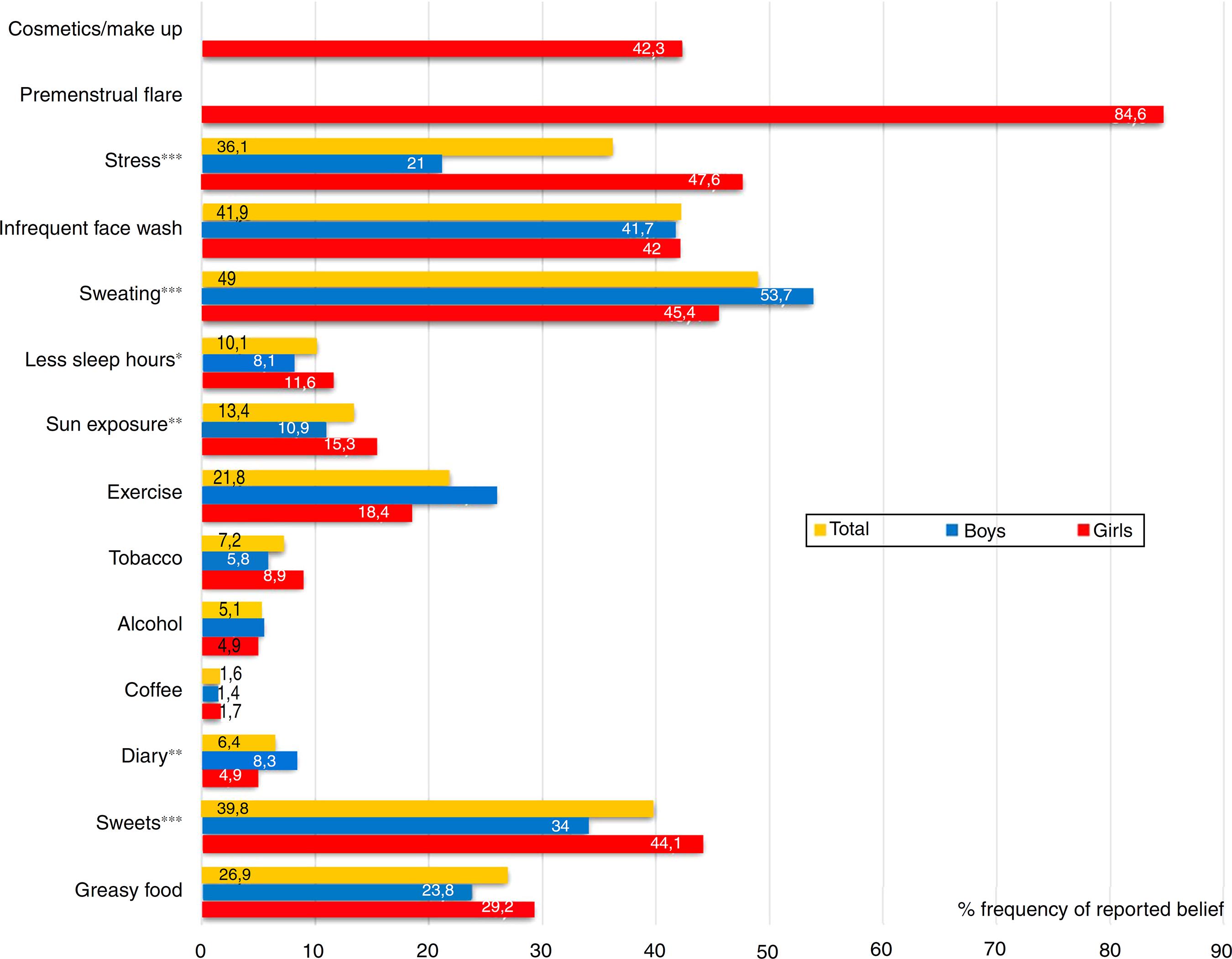Abstract
Background:
Acne vulgaris is recognized as the third most prevalent skin disease worldwide, with highest prevalence among adolescents. Beliefs and perceptions of adolescents about acne are incoherent in the literature.
Objectives:
To assess the most frequently reported acne-related beliefs in adolescents in order to focus on misconceptions and develop proper recommendations.
Methods:
A cross-sectional community-based study on representative sample of 2516 schoolchildren was conducted in six randomly selected secondary schools in Belgrade, Serbia. Only schoolchildren with present or past acne history participated. Factors believed to aggravate or ameliorate acne were recorded and analyzed, and the comparisons between girls and boys were evaluated using Pearson's chi-squared test.
Results:
A total of 1452 schoolchildren with acne participated, aged 14-18 years, among them 801 (55.2%) girls and 651 (44.8%) boys. Boys significantly more frequently believed that sweating, exercise, and dairy foods aggravate acne, whereas girls significantly more frequently blamed emotional stress, sweets, fatty foods, sun, and lack of sleep. The top four amelioration factors were as follows: comedone extraction, healthy diet, sun exposure, and increased water consumption. Acne regression was more frequently perceived to be linked with cigarettes in boys, but with sun exposure and weight loss in girls.
Study limitations:
The narrow age span of adolescents (14-18 years) and exclusion of acne-free adolescents are limitations due to study design.
Conclusion:
This survey is part of the first epidemiological study on a representative sample in the Western Balkan region. The significance of the most frequent acne-related beliefs is discussed and myths about acne are highlighted.
KEYWORDS
Acne vulgaris; Adolescent; Perception


